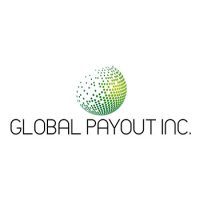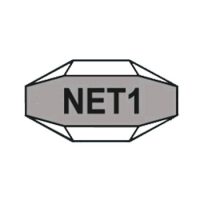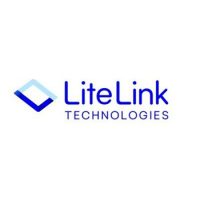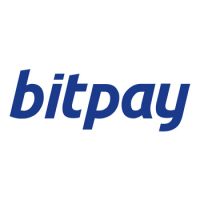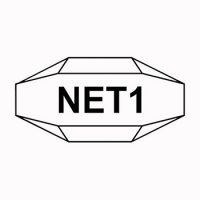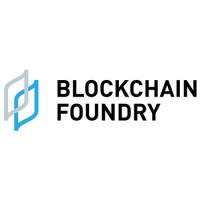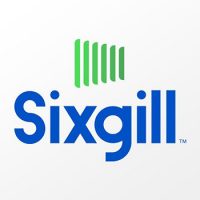Blockchain Press Releases
Cloud Database and DBaaS Market worth $57.5 billion by 2028 – Exclusive Report by MarketsandMarkets™
CHICAGO, July 12, 2023 /PRNewswire/ — The future of the cloud database and DBaaS market looks promising with continued growth, multi-cloud and hybrid deployments, integration with AI and machine learning, focus on security and privacy, and advancements in edge computing. Providers will prioritize developer experience and continuous innovation to meet evolving customer needs and drive digital transformation.
The global Cloud Database and DBaaS Market size is expected to grow from USD 21.3 billion in 2023 to USD 57.5 billion by 2028 at a Compound Annual Growth Rate (CAGR) of 22.0% during the forecast period, according to a new report by MarketsandMarkets™. The Cloud Database and DBaaS Market is currently expanding, and vendors are adopting a strategic focus to attract customers. The emphasis is on providing a straightforward and elegant user experience. As more users turn to Cloud Database and DBaaS to streamline their asset creation process, software providers must respond to the demand for simple, user-friendly solutions.
Browse in-depth TOC on “Cloud Database and DBaaS Market“
375 – Tables
56 – Figures
284 – Pages
Download PDF Brochure @ https://www.marketsandmarkets.com/pdfdownloadNew.asp?id=1112
Scope of the Report
|
Report Metrics |
Details |
|
Market size available for years |
2018-2028 |
|
Base year considered |
2022 |
|
Forecast period |
2023–2028 |
|
Forecast units |
Value (USD) Million/Billion |
|
Segments Covered |
Offering and End-Use |
|
Region covered |
North America, Europe, Asia Pacific, Middle East & Africa, Latin America |
|
Companies covered |
Cisco (US), Aruba (US), Extreme Network (US), Arista (US), Purple (UK), Enea (Sweden), Boingo (US), Netgear (US), IronWifi (US), GlobalReach (UK), Cloud4Wi (US), Skyfii (Australia), GoZone (US), Adentro (US), Anuvu (US), Spotipo (US), Nexnet Solutions (UAE), Performance Network (UK), Cloudi-Fi (France), WifiGem (Italy), Satcom Direct (US), Intelsat (US), Ray (Singapore), WatchGuard (US), Grandstream (US), Keenetic (Germany), Juniper (US). |
SQL segment to hold the largest market size during the forecast period
In a short period of time, SQL can process a lot of data. Due to their efficiency, fundamental operations—such as deletion, insertion, and any type of data manipulation—occur at breakneck speed. SQL is free software that is backed by a large user base. No matter where they are in the world, users can find documentation and troubleshooting advice. Numerous business sectors, including those in technology, finance, retail, music, and even medicine, make extensive use of SQL. It is very user-friendly, scalable, and accessible. The NoSQL segment is expected to grow at a higher CAGR during the forecast period compared to the SQL segment. Data analytics is increasingly in demand as more and more processes generate data, which reveals important business insights that fuel the market’s expansion. Appropriate database technology is required to analyze the data. NoSQL accomplishes this goal in the case of unstructured data by supporting basic data analytics. Data analytics will become more important, particularly for unstructured data. In addition, over the past few years, the big data market has grown quickly. Users can perform intricate tasks using SQL, such as querying, inserting, updating, and deleting data from a database. Even non-technical users can interact with databases and retrieve data using its straightforward syntax without having to write a lot of code. Additionally, SQL offers a standardized method of interacting with databases, guaranteeing that data is uniform and consistent across various systems. It is widely used in many different applications, including web development, data analytics, business intelligence, and more, making it a must-have skill for data professionals and developers. Because of its many benefits, SQL is well-liked and in high demand. It is a trustworthy and effective language for interacting with databases. For SQL, no coding knowledge is necessary. Large numbers of lines of code are not necessary for data retrieval. The use of all fundamental keywords like SELECT, INSERT INTO, UPDATE, and others, as well as the simplicity of the syntactical rules, make SQL a user-friendly language.
Request Sample Pages @ https://www.marketsandmarkets.com/requestsampleNew.asp?id=1112
Retail & Consumer Goods vertical to record the highest CAGR during the forecast period.
Beyond conventional ERP, CRM, and supply chain management, retail is growing. Online retail is now more crucial than ever because of how fiercely businesses are competing with one another. Every business must manage multiple stores and supply chains while offering a distinctive customer experience if they want to survive in this fiercely competitive sector. The best option to streamline all of these processes is to integrate cloud computing into retail. Adoption of the cloud lowers IT costs, streamlines processes, and enhances productivity and user experience. Many stores continue to run in a disconnected, siloed, and offline fashion without updating. Quick and real-time data exchange between the systems, such as inventory, orders, and shipping, is prohibited by this type of operational ecosystem. They could establish an operations team with real-time data by moving to the cloud. An omnidirectional data flow of this kind can assist retailers in timely fulfilment, restocking products before they run out, assigning orders to the last-mile delivery team wisely, and ultimately enhancing the customer experience.
Every customer who comes to the online retail store will interact digitally. These interactions produce a tonne of useful data. Important data like inventory, customer information, and more are available on the website. Business information should unquestionably be protected as it is confidential. Loss of personal data resulting from network intrusion, DDoS attacks, and ransomware is one of the major reasons for business failure. One of the key issues that need to be addressed is data security. Most retailers keep track of their sales data, client reviews, inventory reports, and other locally hosted servers that are a little bit risky. Using internal firewalls, advanced firewalls, encryption, event logging, and physical security, the cloud helps secure the data. Customers and sales information gathered by retailers is typically underutilized. High-performance computing resources and statistical models are made available by cloud services to analyse customer purchasing patterns. Understanding consumer behavior, market trends, and brand interactions will help retailers use this data to better tailor their business models. With data, retailers can learn all about seasonal spikes, product bundling, and whether or not their representation of the products is accurate, and they can analyse the most popular shipping options, such as door delivery, online shopping, curb side pickup, in-store pickup, etc. Every retailer can change their business model in this way to increase their revenue.
North America is projected to have the largest market size during the forecast period.
North America is expected to have the largest market size in the Cloud Database and DBaaS Market, and the trend is expected to continue till 2028. During the forecast period, it is anticipated that the market for cloud databases and DBaaS in North America will expand significantly. The market is primarily driven by a number of crucial factors, such as a sizable number of US-based businesses and widespread use of cloud database services across a range of sectors, including BFSI, healthcare, retail, energy & utilities, and others. Cloud data storage is now welcomed by businesses as a viable and economical alternative. Since individuals and organizations with different corporate storage needs may wish to store their data in the cloud, data storage companies offer tailored solutions to suit their clients’ preferences. Because it enables them to use other people’s infrastructure and storage equipment as needed, cloud storage appeals to most people. It costs less, is less stressful, and offers value compared to a company maintaining all of its local storage on-site with an IT specialist managing and watching it. New goods and services are being introduced by businesses in the area to gain a competitive edge.
To manage and optimize customers’ on- and off-premise clouds, Hewlett Packard Enterprise, for instance, introduced HPE GreenLake Hybrid Cloud. Continuous management and optimization of customer environments in top cloud solutions like Microsoft Azure, AWS, and Azure Stack are offered by HPE GreenLake Hybrid Cloud. The use of hybrid on-premises and off-premises clouds is growing in the area. A hybrid cloud is the best operating environment for a resilient government; 92% of federal IT managers agreed in 2021, according to MeriTalk, research from a government news analysis organization. Additionally, more than two-thirds (67%) claimed that COVID-19 sped up the adoption of hybrid clouds in their companies by a year or more. In a report released by Stormforgein in April 2021, 18% of North American respondents claimed that their company spends between USD 100,000 and USD 250,000 per month on cloud computing. Furthermore, 32% of respondents predicted that their organization’s cloud spending would increase significantly over the following 12 months, while 44% predicted that cloud spending would increase somewhat over that period. The preference of organizations for SaaS-based offerings and the adoption of digital business strategies are the main drivers of widespread adoption. Furthermore, it is anticipated that during the study period, demand for cloud services based on data integrity and privacy will continue to rise, giving leading vendors more opportunities to expand their market share. Additionally, Northern Virginia had the highest net absorption from data centers among the top data center markets in the US last year, totaling 303.3 megawatts. The market for cloud databases and DBaaS is anticipated to expand more quickly as a result of these trends in data center adoption.
Top Key Companies in Cloud Database and DBaaS Market:
Some prominent players across all service types profiled in the Cloud Database and DBaaS Market study include Google (US), Microsoft (US), AWS (US), IBM (US), Oracle (US), Alibaba Cloud (China), SAP (Germany), MongoDB (US), EnterpriseDB (US), Redis Labs (US), Tencent (China), Rackspace (US), Teradata (US), CenturyLink (US), Neo4J (US), Datastax (US), Tigergraph (US), MariaDB (US), RDX (US), SingleStore (US).
Recent Developments
- In May 2022, Google launched Manufacturing Data Engine and Manufacturing Connect. These two new solutions allowed manufacturers to connect previously siloed assets, process and standardize data, and improve visibility from the factory floor to the cloud. Once the data is unified, the solutions enable three critical AI and analytics-based use cases: manufacturing analytics and insights, predictive maintenance, and machine-level anomaly detection.
- In October 2022, Microsoft partnered with LSEG. LSEG and Microsoft announced a 10-year strategic partnership for next-generation data and analytics solutions, as well as cloud infrastructure solutions; Microsoft will make an equity investment in LSEG through share acquisition. New collaboration with Microsoft Azure, AI, and Microsoft Teams to architect LSEG’s data infrastructure and build intuitive next-generation productivity, data and analytics, and modeling solutions.
- In May 2023, IBM acquired Polar Security. Polar Security, a technology innovator that helps businesses discover, continuously monitor, and secure the cloud, has been acquired by IBM. Polar Security’s DSPM technology will be integrated into IBM’s Guardium family of leading data security products. With the addition of Polar Security’s DSPM technology, IBM Security® Guardium will provide security teams with a data security platform that spans all data types and storage locations: SaaS, on-premises, and public cloud infrastructure.
Inquiry Before Buying @ https://www.marketsandmarkets.com/Enquiry_Before_BuyingNew.asp?id=1112
Cloud Database and DBaaS Market Advantages:
- Because cloud databases and DBaaS solutions offer seamless scalability, organisations may easily increase or decrease their database resources in response to demand. Businesses may now adapt quickly to shifting customer demands without having to calculate their capacity in advance.
- Pay-as-you-go cloud databases let businesses only pay for the resources they really use. As a result, there is no longer a requirement for substantial upfront hardware and infrastructure investments. Additionally, since the cloud service provider takes care of hardware upkeep, software upgrades, and security patches, cloud databases don’t require continuous maintenance expenses.
- Compared to conventional on-premises databases, cloud databases and DBaaS systems can be installed and set up more quickly. This enables businesses to quicken the development of their applications and hasten the launch of new goods and services.
- Compared to on-premises alternatives, cloud databases offer more flexibility and agility. Organisations can select the database that best meets their unique demands thanks to the large variety of database engines and configurations they offer. Organisations can create adaptable and scalable infrastructures by integrating cloud databases with other cloud services and technologies.
- There are frequently tools and capabilities for autonomous scaling and performance optimisation incorporated into cloud databases. They are able to automatically assign resources based on workload demands, assuring optimal performance.
- Cloud databases effortlessly connect with other cloud services and technologies, including serverless computing, data lakes, analytics platforms, and machine learning tools. This makes it possible for businesses to take advantage of the strength of these ecosystems for sophisticated data processing, analytics, and insights.
- The confidentiality, integrity, and availability of the stored data are guaranteed by cloud database providers, who invest significantly in security measures to protect data from unauthorised access. To help firms fulfil their legal requirements, they frequently include cutting-edge security features like encryption at rest and in transit, access restrictions, and built-in compliance certifications (such SOC 2, GDPR, and HIPAA).
Report Objectives
- To define, describe, and forecast the cloud database and Database as a Service (DBaaS) market by database type, component, service, deployment model, organization size, vertical, and region
- To forecast the market size of regional segments: North America, Europe, Asia Pacific (APAC), Middle East and Africa (MEA), and Latin America
- To strategically analyze the market’s subsegments with respect to individual growth trends, prospects, and contributions to the total market
- To provide detailed information related to major factors (drivers, restraints, opportunities, and challenges) influencing the growth of the market
- To analyze opportunities in the market for stakeholders and provide details of the competitive landscape for major players
- To comprehensively analyze the core competencies of key players
- To track and analyze recession impact and competitive developments, such as mergers and acquisitions, product developments, and partnerships and collaborations, in the market
Browse Adjacent Markets: Software and Services Market Research Reports & Consulting
Related Reports:
Captive Portal Market – Global Forecast to 2028
Metaverse in Education Market – Global Forecast to 2028
Law Enforcement Software Market – Global Forecast to 2028
Accounts Receivable Automation Market– Global Forecast to 2027
Payment Processing Solutions Market – Global Forecast to 2027
About MarketsandMarkets™
MarketsandMarkets™ is a blue ocean alternative in growth consulting and program management, leveraging a man-machine offering to drive supernormal growth for progressive organizations in the B2B space. We have the widest lens on emerging technologies, making us proficient in co-creating supernormal growth for clients.
The B2B economy is witnessing the emergence of $25 trillion of new revenue streams that are substituting existing revenue streams in this decade alone. We work with clients on growth programs, helping them monetize this $25 trillion opportunity through our service lines – TAM Expansion, Go-to-Market (GTM) Strategy to Execution, Market Share Gain, Account Enablement, and Thought Leadership Marketing.
Built on the ‘GIVE Growth’ principle, we work with several Forbes Global 2000 B2B companies – helping them stay relevant in a disruptive ecosystem. Our insights and strategies are molded by our industry experts, cutting-edge AI-powered Market Intelligence Cloud, and years of research. The KnowledgeStore™ (our Market Intelligence Cloud) integrates our research, facilitates an analysis of interconnections through a set of applications, helping clients look at the entire ecosystem and understand the revenue shifts happening in their industry.
To find out more, visit www.MarketsandMarkets™.com or follow us on Twitter, LinkedIn and Facebook.
Contact:
Mr. Aashish Mehra
MarketsandMarkets™ INC.
630 Dundee Road
Suite 430
Northbrook, IL 60062
USA: +1-888-600-6441
Email: [email protected]
Research Insight: https://www.marketsandmarkets.com/ResearchInsight/cloud-database-as-a-service-dbaas-market.asp
Visit Our Website: https://www.marketsandmarkets.com/
Content Source: https://www.marketsandmarkets.com/PressReleases/cloud-database-as-a-service-dbaas.asp
Logo: https://mma.prnewswire.com/media/660509/MarketsandMarkets_Logo.jpg
View original content:https://www.prnewswire.co.uk/news-releases/cloud-database-and-dbaas-market-worth-57-5-billion-by-2028—exclusive-report-by-marketsandmarkets-301875294.html

Blockchain
Blocks & Headlines: Today in Blockchain – May 30, 2025 (Fraser Edwards, Kyiv NFT, Spirit Blockchain Capital, Indian eHealth, Hedera)

Blockchain technology and cryptocurrencies continue to redefine industries—from competitive gaming and cultural heritage preservation to corporate finance, healthcare, and alternative tokens. Today’s briefing highlights five pivotal developments shaping the ecosystem: Fraser Edwards’s vision for trust in eSports; Ukraine’s wartime cultural preservation via NFTs; Spirit Blockchain Capital’s Q1 2025 operational report; India’s push for blockchain-enabled electronic health records (EHRs); and the rise of viral altcoins such as UniLabs, Sui, and Hedera Hashgraph. Together, these stories illustrate the themes of trust and identity, preservation and provenance, institutional maturation, public-sector innovation, and token diversification. In this op-ed–style round-up, we distill the essence of each story, cite sources, and offer analysis on how they advance Web3, DeFi, and NFT frontiers.
1. Rebuilding Trust in eSports: Can Blockchain Fix Competitive Integrity?
Source: CCN
Summary:
In a recent CCN interview, veteran trader and eSports investor Fraser Edwards argues that blockchain’s immutable ledgers can restore credibility in the rapidly commercializing world of competitive gaming. According to Edwards, match-fixing scandals and opaque prize-pool distributions have eroded fan confidence. By tokenizing tournament entries and payouts on public blockchains—complete with smart-contract–enforced escrow—organizers can guarantee that prize monies are distributed exactly as advertised, and that no post-match manipulation occurs. Tournament operators in Asia and North America are already piloting Ethereum-based payout dApps, aiming to increase transparency for players and sponsors alike.
Key details & analysis:
-
Smart-contract escrow: Funds are held in a time-locked contract that releases prize money only upon verifiable match results. This prevents disputes over referee decisions or delayed payments.
-
On-chain reputation: Player and team reputations can be tokenized via non-fungible reputation badges that accrue based on fair play and community votes—discouraging cheating.
-
Scalability concerns: High-traffic tournaments may require Layer 2 rollups or alternative chains (e.g., Polygon, Immutable X) to reduce gas costs and latency.
Opinion: Blockchain’s dual promise of provable fairness and programmable finance makes it uniquely suited to eSports. Yet adoption hinges on UX: seamless wallet integrations, minimal transaction fees, and clear regulatory guidance on esports tokens.
2. When Art Meets Blockchain: Ukraine’s Wartime Cultural Preservation
Source: The Kyiv Independent
Summary:
As monuments crumble under artillery fire, Ukrainian curators and technologists are partnering to mint NFTs representing lost or endangered artifacts. The Kyiv Independent reports that the National Art Museum of Ukraine has launched “Project Phoenix,” tokenizing high-resolution 3D scans of sculptures, manuscripts, and paintings. Proceeds from initial sales fund restoration and digital archiving efforts. Each NFT embeds provenance metadata—including GPS coordinates, curator notes, and condition reports—ensuring that future generations can verify authenticity and context, even if the physical artifact is destroyed.
Key details & analysis:
-
Metadata richness: Beyond simple ownership, NFTs store structured metadata—using ERC-721 metadata extensions—that capture curatorial insights and conservation logs.
-
Decentralized archives: IPFS and Arweave are employed to host ultra-high-resolution imagery, with on-chain hashes guaranteeing data integrity.
-
Community engagement: Fractional-NFT drops allow diaspora communities to collectively own tokens, strengthening cultural ties and crowdfunding preservation.
Opinion: Blockchain’s ability to immutable record heritage provides a lifeline for war-torn nations. However, ensuring that local institutions retain governance over metadata edits and future migrations is critical to avoiding “cultural colonialism” by global NFT marketplaces.
3. Spirit Blockchain Capital’s Q1 2025 Highlights: Growth, Investments, and Outlook
Source: GlobeNewswire
Summary:
Spirit Blockchain Capital’s Q1 2025 report benchmarks the firm’s operational milestones and financial performance. Assets under management (AUM) climbed 45% to $1.02 billion, driven by strategic allocations to top-tier Layer 1 and Layer 2 protocols, DeFi liquidity pools, and a newly launched token-index fund. Operating income rose 37%, fueled by management fees and performance incentives. The firm also closed its second blockchain-focused venture fund at $150 million, earmarked for early-stage Web3 projects in gaming, infrastructure, and decentralized identity.
Key details & analysis:
-
Diversification strategy: 60% of AUM in blue-chip cryptocurrencies (Bitcoin, Ethereum); 25% in DeFi (Aave, Uniswap, Lido); 15% in tokenized commodities and NFTs.
-
Fund performance: The flagship fund delivered a 9.8% return in Q1, outperforming the 6.2% benchmark set by the Bloomberg Galaxy Crypto Index.
-
Venture investments: Early stakes in zero-knowledge proof startups and decentralized storage platforms signal confidence in scalability and privacy innovations.
Opinion: Spirit’s robust growth and disciplined diversification mirror institutional maturation in the blockchain asset management space. As regulatory clarity improves, expect further inflows from endowments, pensions, and family offices.
4. Blockchain EHRs in India: The Next Digital Health Revolution
Source: ORF
Summary:
The Observer Research Foundation (ORF) details India’s pioneering pilot of blockchain-backed electronic health records (EHRs) in the state of Andhra Pradesh. By leveraging a permissioned Hyperledger Fabric network, the initiative ensures that patient records—from vaccination histories to diagnostic imaging—are securely shared across hospitals, clinics, and pharmacies. Patients control access via digital identities anchored to India’s Aadhaar system, granting temporal permissions for data viewing and preventing unauthorized sharing.
Key details & analysis:
-
Interoperability: HL7 FHIR standards are mapped to on-chain transactions, enabling seamless data exchange with existing hospital information systems (HIS).
-
Privacy safeguards: Off-chain storage of PHI (Protected Health Information) is encrypted with patient-held keys; only hashed pointers reside on-chain to ensure immutability without exposing sensitive data.
-
Regulatory alignment: The pilot aligns with India’s draft Digital Health Act, which emphasizes data sovereignty and patient consent frameworks.
Opinion: Blockchain EHRs can democratize healthcare access in a populous nation—but success depends on user-friendly portals, robust identity verification, and contingency plans for network outages in rural areas.
5. The Hottest Viral Altcoins of 2025: UniLabs, Sui, and Hedera Lead the Pack
Source: TronWeekly
Summary:
According to TronWeekly, the altcoin landscape in 2025 is dominated by three viral tokens: UniLabs (UNI-L), Sui (SUI), and Hedera Hashgraph (HBAR). UniLabs, a governance token for a decentralized laboratory network, saw a 1,200% year-to-date surge on news of its AI-driven drug-discovery partnership. Sui’s Move-based smart-contract platform gained traction for sub-second finality and low gas fees, with total value locked (TVL) surpassing $2 billion. Hedera’s HBAR continues its enterprise pivot, securing multi-year agreements with global brands for identity verification and supply-chain tracking.
Key details & analysis:
-
UniLabs use case: Token holders vote on research grants and share in royalty revenues from patented compounds developed on-chain.
-
Sui performance: With a novel object model and horizontal sharding, Sui supports over 3,000 TPS (transactions per second) without compromising on decentralization.
-
Hedera enterprise: The Governing Council—comprising Boeing, Google, and LG—bolsters confidence in HBAR’s governance model and paves the way for compliant enterprise deployments.
Opinion: These tokens exemplify the diversification of blockchain applications. Investors should assess not only market hype but also protocol fundamentals—developer activity, economic incentives, and real-world adoption.
Cross-Story Trends & Key Takeaways
-
Trust & Transparency at the Core
From esports prize-pool ledgers to wartime NFT archives and permissioned health records, blockchain’s immutability fosters verifiable trust—a prerequisite for mainstream adoption across sectors. -
Institutional & Public-Sector Innovation
Spirit Blockchain Capital’s fund growth and India’s EHR pilot signal that both private and government entities view blockchain as a strategic infrastructure, not just speculative assets. -
Vertical Specialization Fuels Token Growth
Viral altcoins like UniLabs, Sui, and Hedera thrive by addressing niche use-cases—governance in biotech, scalable DeFi rails, and enterprise identity—underscoring the importance of purpose-built protocols. -
Metadata & Provenance Drive NFTs Beyond Art
Ukraine’s cultural NFTs demonstrate how rich on-chain metadata can preserve heritage, while esports applications show that reputation tokens can enforce fair-play credentials. -
Ecosystem Maturation Requires UX & Governance
Across all stories, user experience—wallet onboarding, identity verification, metadata curation—and robust governance frameworks (tokenomics, regulatory alignment) emerge as decisive factors in blockchain’s next wave.
Conclusion
Today’s blockchain headlines reveal a maturing ecosystem where trust, transparency, and targeted innovation unlock new frontiers—from safeguarding digital heritage amid conflict to revolutionizing healthcare and sports. As institutional players allocate billions, and public-sector pilots chart regulatory pathways, the fate of tomorrow’s Web3 landscape hinges on seamless UX, rigorous governance, and demonstrable real-world utility. Stay tuned for tomorrow’s Blocks & Headlines, where we’ll continue tracking the trends, tokens, and technologies that define the blockchain revolution.
The post Blocks & Headlines: Today in Blockchain – May 30, 2025 (Fraser Edwards, Kyiv NFT, Spirit Blockchain Capital, Indian eHealth, Hedera) appeared first on News, Events, Advertising Options.
Blockchain Press Releases
Bybit Earnival Unlocks 4 Weeks of Golden Rewards

DUBAI, UAE, May 30, 2025 /PRNewswire/ — Bybit, the world’s second-largest cryptocurrency exchange by trading volume, is excited to raise the stakes for Bybit Earn users in a four-week long rewards program, the Bybit Earnival. From now to June 22, eligible Bybit users may sign up for the event for a chance to earn up to 555% APR and Gold Tokens.
With paradigm shifts taking place in the global investment landscape, Bybit Earn offers a wide range of yield-bearing products catered to the diverse needs of traders. The offerings unlock access to beginner products with guaranteed returns such as flexible staking, advanced savings products at various risk levels, and tokenized real-world assets including XAUT, a digital token backed by physical solid gold.
For four weeks in a row, Bybit users may check into Bybit Earn for a rewarding experience packed with exclusive perks:
- New User Exclusives: Users new to Bybit Earn can enjoy a boost for Fixed Savings products of up to 555% APR on USDT. The offer applies in the first two days after their initial deposit and staking of 100 to 300 USDT.
- Extra APR Savings Products Every Week: Limited-time savings products with highly competitive APRs, starting at 500 USDT in net deposit, are refreshed daily at 6 AM UTC, with new offers launching every Monday at midnight.
- Weekly Leaderboard Prize: Participants who acquire 3,000 USDT or more weekly in eligible Earn products can compete on the weekly leaderboard to win up to 1,000 USDT in Gold Tokens. Rankings update daily, and rewards are distributed within 7–14 days.
The event is open to verified retail customers with Savings service enabled on Bybit to ensure a fair and even level competition.
Bybit Earn is a popular tool for Bybit users to maximize the earning potential of their idle crypto assets on the trading platform. With a focus on consistent yield and regular promotions for higher APR, Bybit Earn is trusted by millions of users on Bybit, the one-stop solution for all their crypto needs.
Terms and conditions apply. For details and eligibility, users may visit Bybit Earnival.
#Bybit / #TheCryptoArk
About Bybit
Bybit is the world’s second-largest cryptocurrency exchange by trading volume, serving a global community of over 70 million users. Founded in 2018, Bybit is redefining openness in the decentralized world by creating a simpler, open and equal ecosystem for everyone. With a strong focus on Web3, Bybit partners strategically with leading blockchain protocols to provide robust infrastructure and drive on-chain innovation. Renowned for its secure custody, diverse marketplaces, intuitive user experience, and advanced blockchain tools, Bybit bridges the gap between TradFi and DeFi, empowering builders, creators, and enthusiasts to unlock the full potential of Web3. Discover the future of decentralized finance at Bybit.com.
For more details about Bybit, please visit Bybit Press
For media inquiries, please contact: [email protected]
For updates, please follow: Bybit’s Communities and Social Media
Discord | Facebook | Instagram | LinkedIn | Reddit | Telegram | TikTok | X | Youtube
Logo – https://mma.prnewswire.com/media/2267288/Logo.jpg
![]() View original content:https://www.prnewswire.co.uk/news-releases/bybit-earnival-unlocks-4-weeks-of-golden-rewards-302469497.html
View original content:https://www.prnewswire.co.uk/news-releases/bybit-earnival-unlocks-4-weeks-of-golden-rewards-302469497.html

Blockchain
Blocks & Headlines: Today in Blockchain – May 29, 2025 (Vaulta, Fosun, Signing Day Sports, Credit Unions, Gaming Innovations)
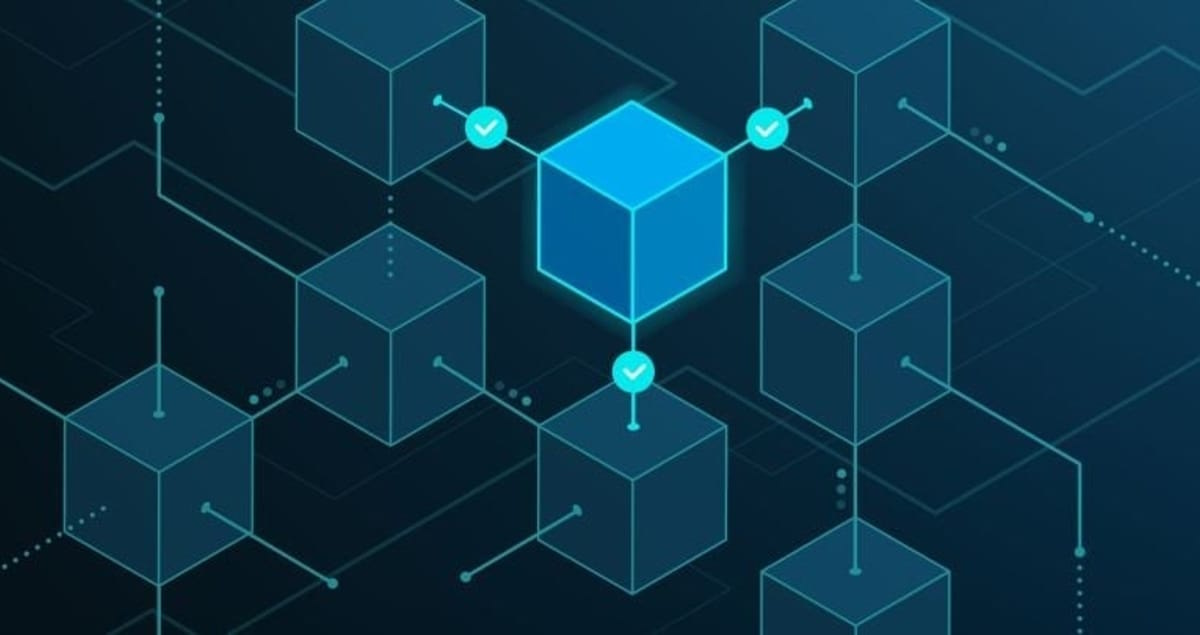
Welcome to Blocks & Headlines, your definitive daily briefing on the latest blockchain breakthroughs, cryptocurrency developments, and Web3 innovations. In today’s edition—May 29, 2025—we explore five pivotal stories shaping the decentralized economy:
- FT Analysis: Crypto Regulation and Institutional Adoption
- Signing Day Sports Seals Deal with Blockchain Digital Infrastructure
- Vaulta & Fosun Partner to Power Hong Kong’s Blockchain Backbone
- Transforming Online Gaming: Blockchain’s Next Frontier
- Credit Unions Embrace Blockchain for Trustworthy Financial Services
This op-ed–style roundup delivers concise yet insightful coverage, critical analysis, and expert opinion on each development’s relevance within the broader blockchain and cryptocurrency ecosystem.
1. FT Analysis: Crypto Regulation and Institutional Adoption
Overview. The Financial Times reports on evolving global regulatory landscapes and their impact on institutional cryptocurrency adoption. FT highlights how major funds and asset managers navigate compliance frameworks in the US, EU, and Asia to integrate digital assets into traditional portfolios.
Source: Financial Times
Detailed Analysis. As regulators across jurisdictions craft tailored guidelines—from MiCA in Europe to the SEC’s evolving crypto classifications in the US—institutions face a balancing act between innovation and compliance:
- MiCA’s Market Integrity Measures: New EU rules mandate clear disclosures for stablecoin issuers and exchange operators, raising the bar for consumer protection.
- SEC’s Custody Interpretations: Emerging guidance on digital asset custody models, including qualified custodians versus self-custody frameworks.
- Asia’s Sandbox Approaches: Hong Kong and Singapore expand sandbox programs, offering controlled environments for DeFi and tokenization trials.
Opinion. Regulatory clarity is the linchpin for institutional inflows. While stringent frameworks may seem burdensome, they ultimately foster market confidence and prevent systemic risks. Asset managers should proactively engage with policymakers, leveraging sandbox insights to shape pragmatic, innovation-friendly regulations.
2. Signing Day Sports Seals Deal with Blockchain Digital Infrastructure
Overview. According to TradingView’s Reuters feed, Signing Day Sports has executed a definitive agreement to acquire Blockchain Digital Infrastructure, a profitable data-hosting specialist serving DeFi and NFT platforms.
Source: Reuters via TradingView
Detailed Analysis. The acquisition underscores the rising value of specialized blockchain infrastructure:
- Scalable Data Nodes: Blockchain Digital Infrastructure operates 150+ high-throughput nodes, ensuring low-latency data delivery for real-time sports NFT drops.
- Profitability Metrics: The company reported $32 million in EBITDA last fiscal year, highlighting sustainable revenue in a niche market.
- Strategic Synergies: Signing Day Sports plans to integrate hosted nodes into its upcoming sports collectibles marketplace, guaranteeing seamless token minting during high-traffic events.
Opinion. In Web3, infrastructure is the invisible backbone. For NFT marketplaces and DeFi protocols, node reliability and data throughput directly impact user experience—and ultimately, revenue. This move positions Signing Day Sports to compete at scale, setting a precedent for vertical integration in blockchain hosting.
3. Vaulta & Fosun Partner to Power Hong Kong’s Blockchain Backbone
Overview. Coindesk reports that Vaulta, a leading digital asset platform, is teaming up with Fosun International to develop blockchain infrastructure for Hong Kong’s emerging crypto hub.
Source: CoinDesk
Detailed Analysis. The collaboration aims to build secure, high-performance rails for trading, custody, and tokenization:
- Layer-1 Interoperability: Joint development of a cross-chain protocol connecting Ethereum, Binance Smart Chain, and local DLT frameworks.
- Institutional Custody Solutions: Licensed trust entities under Fosun’s umbrella will offer insured cold-storage services for professional investors.
- Regulatory Cooperation: Partnership includes a liaison with the Hong Kong SFC to ensure compliance with the new Virtual Assets Service Provider (VASP) regime.
Opinion. Asia remains a hotbed for blockchain innovation, but regulatory fragmentation poses hurdles. Vaulta’s alliance with Fosun exemplifies public-private synergy—combining local market expertise, financial strength, and technical know-how to anchor the city’s digital asset ambitions.
4. Transforming Online Gaming: Blockchain’s Next Frontier
Overview. TronWeekly examines how blockchain technologies—especially NFTs and decentralized marketplaces—are redefining online gaming economies.
Source: TronWeekly
Detailed Analysis. Key trends driving gaming’s blockchain revolution:
- Play-to-Earn Economies: Games like Axie Infinity and emergent titles use tokenized rewards and NFT-based assets to create real-world value for players.
- Decentralized Marketplaces: Platforms such as Enjin and Immutable X offer gas-free trading environments for in-game items, enhancing liquidity.
- Cross-Game Asset Portability: Standards like ERC-1155 enable items to move seamlessly between compatible titles, fostering interoperability.
Opinion. Gaming is blockchain’s killer app. Beyond speculative hype, tokenization can democratize game economies, allowing genuine ownership and secondary markets. Developers must, however, tackle scalability and user onboarding frictions—layer-2 solutions and intuitive wallets are essential for mass adoption.
5. Credit Unions Embrace Blockchain for Trustworthy Financial Services
Overview. AP’s business coverage highlights several US credit unions piloting blockchain-based platforms to enhance transaction transparency, reduce settlement times, and cut cross-border remittance fees.
Source: AP News
Detailed Analysis. Examples of credit union blockchain pilots:
- Consortium-Led DLT: A consortium of midwestern credit unions uses a permissioned Hyperledger Fabric network to settle inter-credit-union payments in near real-time.
- Remittance Solutions: Deployment of Stellar-based rails reduces remittance costs by up to 60%, benefiting diaspora communities.
- Member Identity Management: Verifiable credential systems streamline KYC processes, reducing onboarding time from days to hours.
Opinion. As community-focused institutions, credit unions can leverage blockchain to reassert their value proposition—offering cost-effective, transparent services that rival large banks and fintechs. Success will hinge on member education and seamless integration with legacy core banking systems.
Central Themes
Today’s dispatch reveals five core themes:
- Regulatory Engagement: From FT’s analysis to Hong Kong’s VASP regime, clear rules underpin institutional and retail growth.
- Infrastructure Control: Signing Day Sports’ acquisition and Vaulta’s Fosun partnership demonstrate the premium on reliable blockchain rails.
- Economic Innovation: Play-to-earn gaming and credit union pilots show tokenization’s real-world impact.
- Interoperability Focus: Cross-chain protocols and ERC-1155 standards drive seamless Web3 experiences.
- Market Confidence: Institutional adoption and compliance frameworks foster long-term trust.
Conclusion
In today’s Blocks & Headlines, we see blockchain’s evolution from experimental playground to enterprise-grade infrastructure: regulators clarify, institutions invest, communities adopt, and developers innovate. Whether you’re tracking regulatory shifts, infrastructure deals, gaming revolutions, or financial cooperatives, the decentralized ledger continues to reshape industries.
Join us tomorrow for Blocks & Headlines, where we continue to unpack blockchain’s latest breakthroughs—one block at a time.
The post Blocks & Headlines: Today in Blockchain – May 29, 2025 (Vaulta, Fosun, Signing Day Sports, Credit Unions, Gaming Innovations) appeared first on News, Events, Advertising Options.
-

 Blockchain Press Releases3 days ago
Blockchain Press Releases3 days agoRain Expands Support to Solana, Tron, and Stellar, Enabling More Partners to Launch Stablecoin-powered Card Programs
-

 Blockchain Press Releases3 days ago
Blockchain Press Releases3 days agoBybit Secures MiCAR License in Austria, Opens European Headquarters in Vienna with Strategic Expansion Plan
-

 Blockchain Press Releases5 days ago
Blockchain Press Releases5 days agoFlipster Reveals Middle East Expansion Plans and Appoints Regional Leadership to Bolster Crypto Trading
-

 Blockchain3 days ago
Blockchain3 days agoBlocks & Headlines: Today in Blockchain – May 29, 2025 (Vaulta, Fosun, Signing Day Sports, Credit Unions, Gaming Innovations)
-

 Blockchain Press Releases5 days ago
Blockchain Press Releases5 days agoCoinW Teams Up with Superteam Europe to Conclude Solana Hackathon and Accelerate Web3 Innovation in Europe
-

 Blockchain5 days ago
Blockchain5 days agoBlocks & Headlines: Today in Blockchain – May 27, 2025 Featuring Blockchain.com, Bilal Bin Saqib, XRP Ledger, Unstoppable Domains, ReNEW, MEXC Ventures
-

 Blockchain6 days ago
Blockchain6 days agoBlocks & Headlines: Today in Blockchain – May 26, 2025 (Lightchain AI, Cetus Hack, Bilal Bin Saqib, The Blockchain Group)
-

 Blockchain Press Releases7 days ago
Blockchain Press Releases7 days agoAB Charity Foundation X AB Blockchain Join Forces to Advance the Global “Tech for Good” Mission





